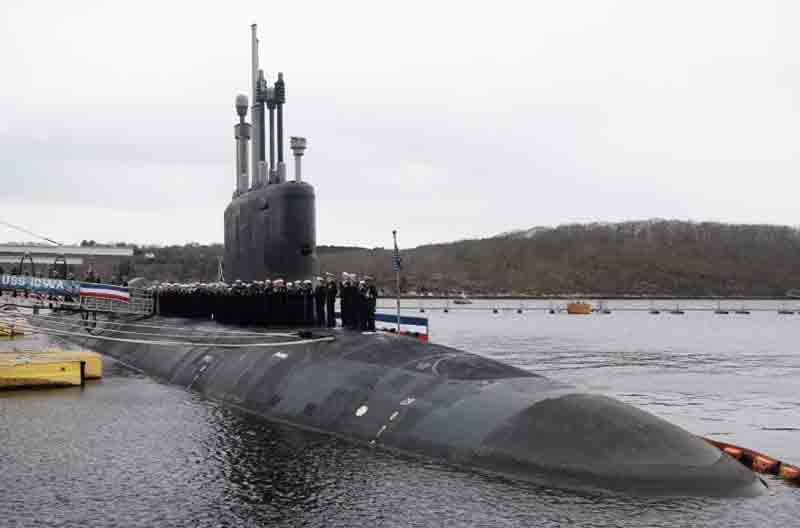American firm General Atomics Aeronautical Systems, Inc. (GA-ASI) and South Korea’s Hanwha Aerospace have made significant progress in enhancing international defense collaboration by signing a new agreement aimed at the joint development and production of Unmanned Aircraft Systems (UAS). This agreement signifies a strategic partnership between two prominent aerospace and defense companies, with the goal of increasing their footprint in the global UAS market in response to the growing demand for unmanned capabilities in contemporary warfare.
This collaboration builds on a pivotal achievement from November 2024, when GA-ASI and Hanwha Aerospace successfully executed a landmark flight demonstration of the MQ-1C Gray Eagle® Short Takeoff and Landing (GE STOL) UAS. The demonstration, conducted from the South Korean Navy’s amphibious landing ship ROKS Dokdo (LPH-6111) while it was underway near Pohang, showcased the Gray Eagle STOL’s capability to launch from naval vessels without the need for catapults or arresting gear. This feature enhances multi-domain operational capabilities, providing U.S. and allied forces with increased flexibility for deploying persistent ISR (Intelligence, Surveillance, and Reconnaissance) and strike assets in challenging or remote environments.
As drone warfare becomes a pivotal aspect of military strategy across various regions—from Ukraine to the Red Sea and the Indo-Pacific—this U.S.-South Korea partnership emerges at a crucial juncture. Countries worldwide are swiftly expanding their drone capabilities to achieve battlefield dominance, enhance surveillance capabilities, and execute precision strikes while reducing risks to personnel. The Gray Eagle STOL effectively addresses these evolving requirements, combining the established reliability of the Gray Eagle 25M airframe with improved STOL performance, enabling operations from unconventional locations such as beaches, roads, and parking lots.
Hanwha Aerospace is demonstrating a strong dedication to this collaborative initiative by committing over 300 billion KRW (around USD 203.5 million) for the development of GE STOL and associated engine manufacturing facilities. This investment will support the expansion of research and development, the establishment of production infrastructure in both South Korea and the United States, and the creation of a solid supply chain by partnering with local component suppliers. The anticipated economic impact is substantial, with estimates suggesting the creation of nearly 10,000 jobs over the next ten years, including at least 500 positions in the U.S., thereby promoting technological advancement and workforce development in both countries.
The significance of this partnership goes beyond mere industrial growth. Strategically, it strengthens the enduring alliance between the U.S. and South Korea by fostering a mutual investment in advanced military capabilities. Linden Blue, CEO of GA-ASI, underscored the importance of this collaboration, noting the positive reception of the successful test flight by the Republic of Korea Navy and expressing confidence in Hanwha’s commitment to jointly advance the UAS sector in both nations.
Dong Kwan Kim, Vice Chairman of Hanwha Group, emphasized the importance of unmanned systems as a vital area for future defense and security. “Through our partnership with GA-ASI, we aim to enhance sovereign defense capabilities, increase Korea’s footprint in the global UAS market, and contribute to a stronger ROK-U.S. alliance,” he stated.
The Gray Eagle STOL, previously referred to as Mojave, distinguishes itself in the competitive UAS landscape through its adaptability and operational autonomy. It is the sole medium-altitude, long-endurance drone that can launch and land from various ship types and challenging environments, having already established several industry standards. In addition to its operations on the Dokdo, it has successfully flown missions from the British aircraft carrier HMS Prince of Wales and participated in live-fire exercises at Yuma Proving Ground in Arizona, demonstrating its versatility in diverse combat situations.
This collaboration between the U.S. and South Korea comes at a crucial moment, as the global military drone market is rapidly expanding due to rising geopolitical tensions and a transition towards network-centric warfare. For both companies, this partnership not only broadens their technological and commercial capabilities but also lays the groundwork for a new model of allied industrial collaboration—one that can swiftly adapt to the changing demands of the battlefield with efficiency and accuracy.
As drones become essential components of contemporary military strategy, alliances like that of GA-ASI and Hanwha Aerospace are poised to shape the future of UAS development. With the Gray Eagle STOL leading the charge, this initiative has the potential to transform how military forces project power, gather intelligence, and sustain dominance in upcoming conflicts.
Discover more from Defence Talks | Defense News Hub, Military Updates, Security Insights
Subscribe to get the latest posts sent to your email.





